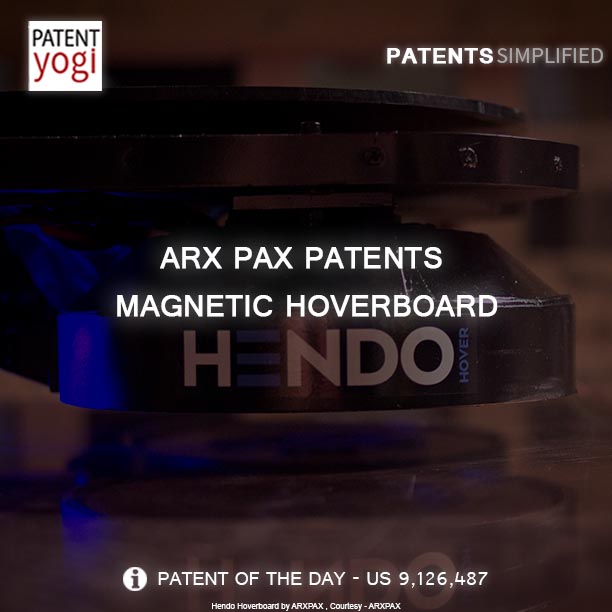Prior to October 2014, Wikipedia, the online encyclopedia, described a hoverboard as a fictional levitating (hovering) board used for personal transportation in the films “Back to the Future Part II” and “Back to the Future Part III.” Hoverboards resemble a skateboard without wheels. Through special effects the film-makers depicted the boards hovering above the ground.
Since these movies, people have dreamed of riding a hoverboard. A few groups have claimed to have created a hoverboard. However, the devices have proven to be elaborate hoaxes. As follows, a hoverboard, which uses magnetic forces to hover, is described.
The patented hoverboard generates magnetic forces which can be used to lift and propel the hoverboard. The magnetic forces are generated using one or more hover engines. In one embodiment, the hover engines each include an electric motor which is configured to rotate an array of magnets. The rotating array of magnets is configured to induce eddy currents in a conductive substrate. The induced eddy currents generate a magnetic field which repels the magnets in the hover engine which causes the hoverboard to hover in the air.
Patent Information
Patent Number: US 9,126,487
Patent Title: Hoverboard which generates magnetic lift to carry a person
Inventors: Henderson; D. Gregory (Saratoga, CA), Moran; Shauna (Sunnyvale, CA), Dougherty; Mitchell (Los Gatos, CA), Espinoza; Victor (Los Gatos, CA), Melvin; Robert William (Portland, OR), Janicki; James (Phoenix, MD), Olynick; David P (Albany, CA)
Assignee: Arx Pax, LLC (Saratoga, CA)
Family ID: 1000001322593
Appl. No.: 14/639,045
Filed: March 4, 2015
Abstract: A hoverboard is described. The hoverboard includes four hover engines each including a motor. The motor rotates an arrangement of magnets to induce eddy currents and generate magnetic lift which causes the hoverboard to hover in the air. The hoverboard can be tilted to propel it in a particular direction. The hover engines can each be coupled to a tilt mechanism which is coupled to a flexible rider platform. When rider platform is flexed via rider induced forces, the hover engines can be tilted individually to provide translational forces.



